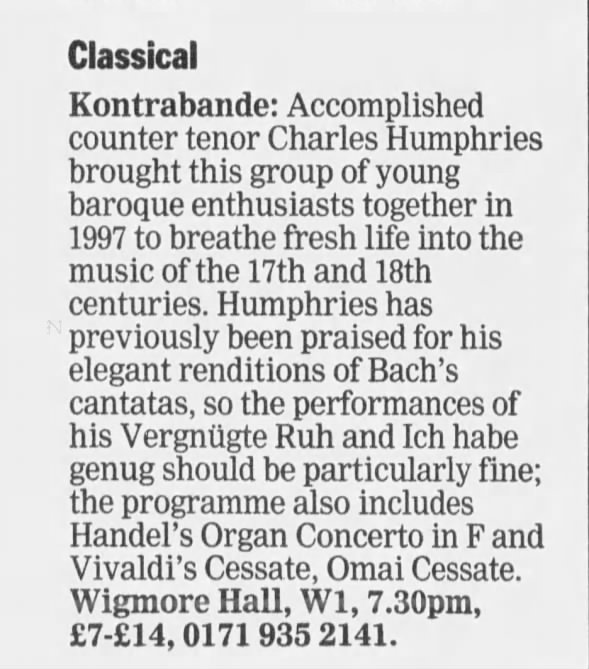
A second visit for me to the London Festival of Baroque Music in a week – the first with Janie to see Jordi Savall.
The themes for the festival and from the 12 May concert continued in this charming lunchtime concert by Improviso – namely ideas around cross-fertilisation of musical ideas across countries/continents, plus the use of improvisation as part of the musical fabric in the Baroque period.
The concert is described on the festival website through this link – click here…
…and similarly described on the St John’s Smith Square website – click here.
I thought this concert might appeal to John Random, who enjoys these lunchtime concerts when we are both available for such. In fact the timing worked so well for us that John was also available to join me at Lord’s for a while after the concert.
While I was striding my way towards Smith Square, a voice to the right of me said “hello Ian”; it was John Friend, taking lunch in a cafe I was passing. Sadly I couldn’t stop to chat with him, but the irony of running into John Friend while on my way to utilise my “Friend of St John’s” rights to lunchtime concerts was not wasted on either of us.
The concert was lovely, with some unusual works as well as some familiar pieces.
Below is some of the Mecmûa-i Sâz ü Söz played in the traditional Ottoman style, rather than the Wojciech Bobowski adaptation which was played by our Improviso quartet.
I cannot find any examples of Improviso playing the pieces we heard at this lunchtime concert, but they do have several lovely examples on their website – click here, including the Castello sonata, embedded below:
John and I had, in fact, enjoyed seeing Johan Löfving perform before – just a few months ago, at such a lunchtime concert…
…but the addition of three more musicians in Improviso, rather than just the duo, enabled each of the musicians to show their individual and collective talents superbly.
Below you can hear the charming Blavet sonata we heard, on this recording performed by Jed Wentz:
Below is the allegro from the Telemann Trio Sonata we heard, but performed by a different young quartet, Ensemble Tolmetes:
In addition to the several pieces listed on the programme, Improviso also improvised a La Folia, very energetically and beautifully I might say. This, for me, felt like a full circle, as Jordi Savall and his pals had performed a couple of La Folias on the Sunday.
Below, a very different La Folia interpretation from any that I saw this week, but an exceptional one by Jordi Savall, family and pals:
But returning to Improviso, they are a very talented young quartet who seem to take great pleasure in making music together and in explaining what they are doing to a rapt audience.
To round off this Ogblog piece, here are Improviso performing William Byrd’s charming tune, John Come Kiss Me Now, demonstrating their style of improvisation:






